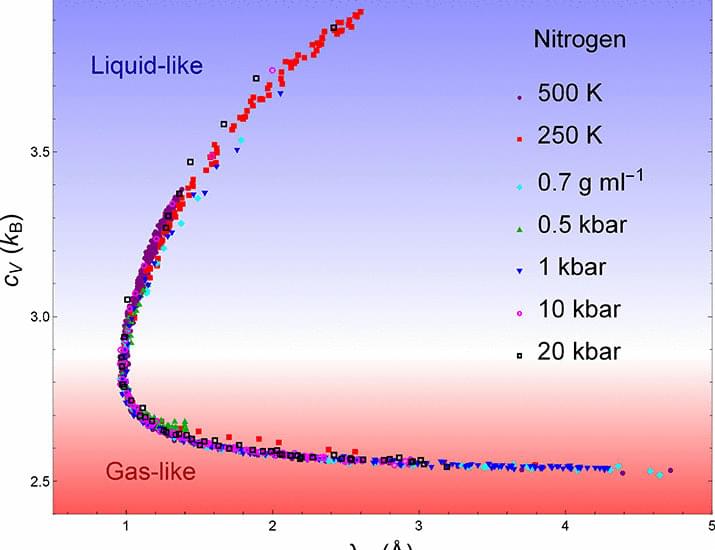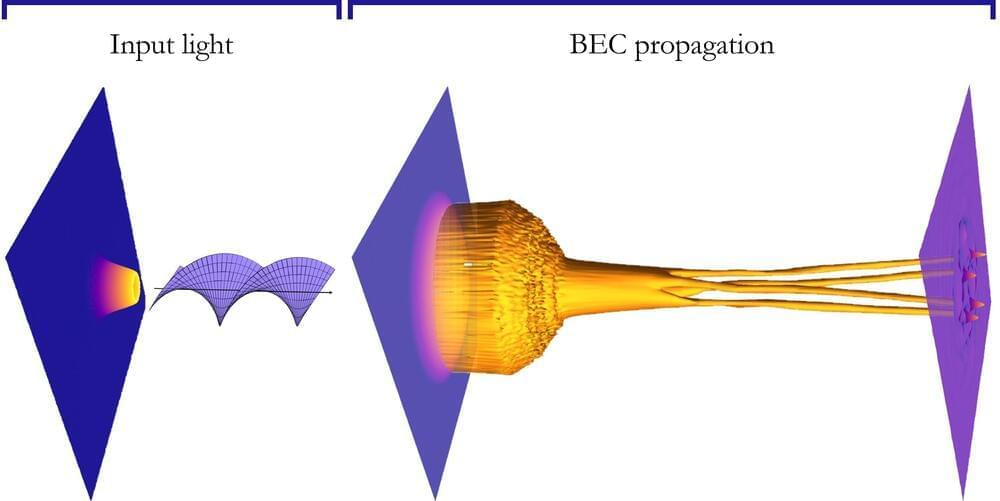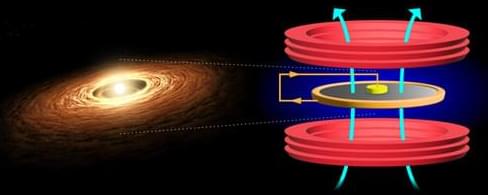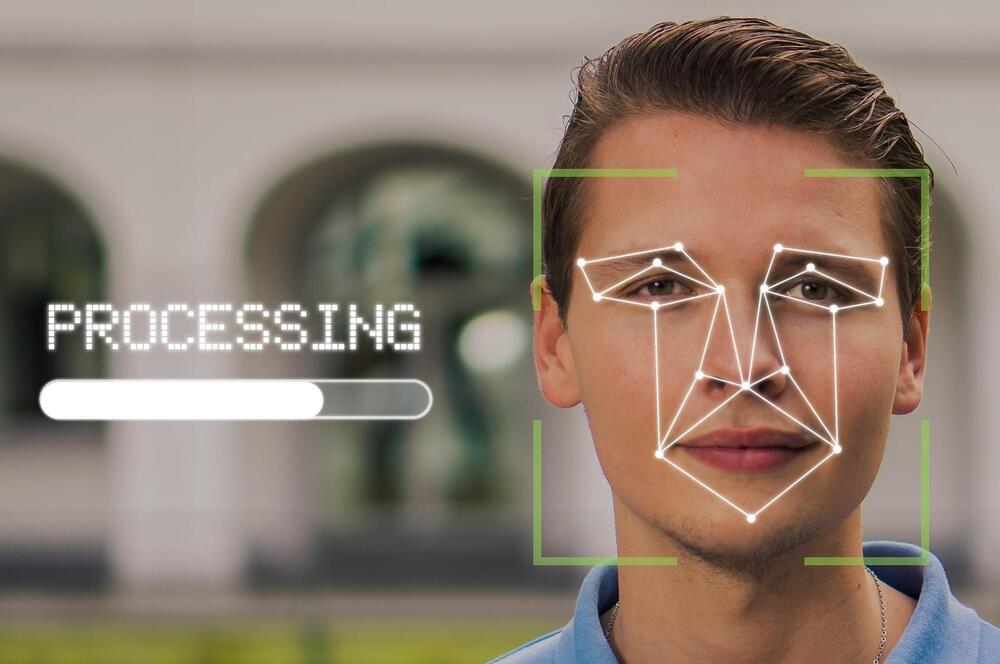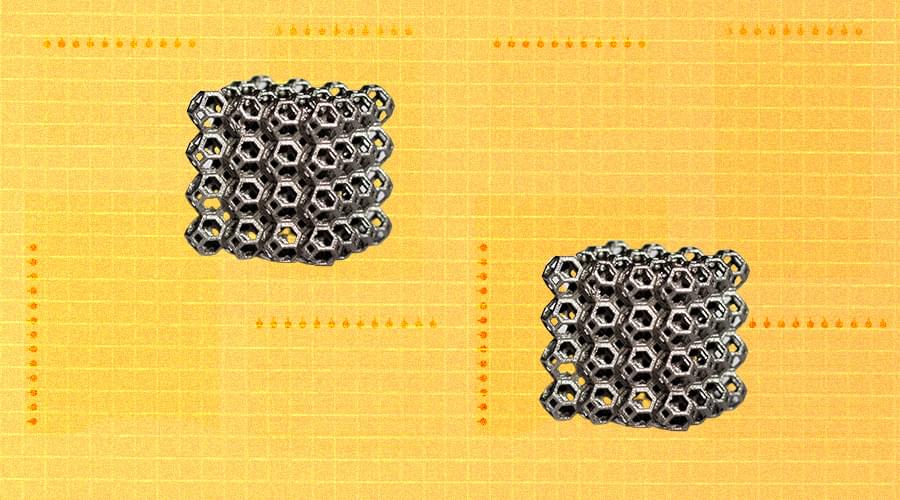Page 3531
Aug 13, 2022
An ultrafast and highly performing nonlinear splitter based on lithium niobate
Posted by Saúl Morales Rodriguéz in categories: computing, electronics
Optics, technologies that leverage the behavior and properties of light, are the basis of many existing technological tools, most notably fiber communication systems that enable long-and short-distance high-speed communication between devices. Optical signals have a high information capacity and can be transmitted across longer distances.
Researchers at California Institute of Technology have recently developed a new device that could help to overcome some of the limitations of existing optical systems. This device, introduced in a paper published in Nature Photonics, is a lithium niobate-based device that can switch ultrashort light pulses at an extremely low optical pulse energy of tens of femtojoules.
“Unlike electronics, optics still lacks efficiency in required components for computing and signal processing, which has been a major barrier for unlocking the potentials of optics for ultrafast and efficient computing schemes,” Alireza Marandi, lead researcher for the study, told Phys.org. “In the past few decades, substantial efforts have been dedicated to developing all–optical switches that could address this challenge, but most of the energy-efficient designs suffered from slow switching times, mainly because they either used high-Q resonators or carrier-based nonlinearities.”
Aug 13, 2022
Bug eyes and bat sonar: Bioengineers turn to animal kingdom for creation of bionic super 3D cameras
Posted by Saúl Morales Rodriguéz in categories: bioengineering, biotech/medical, cyborgs, robotics/AI, transhumanism
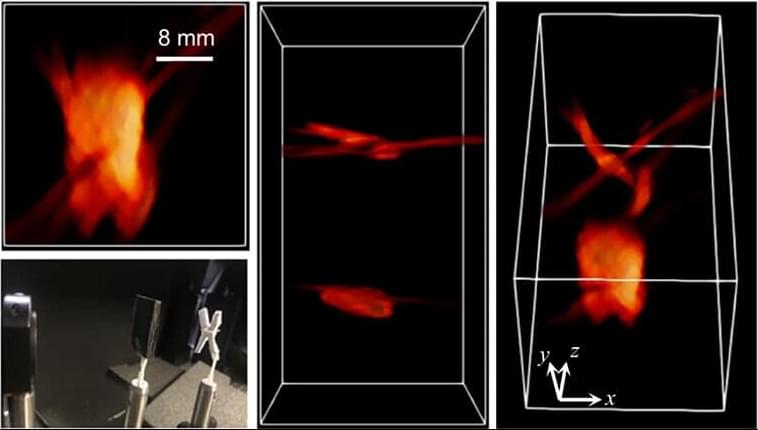
A pair of UCLA bioengineers and a former postdoctoral scholar have developed a new class of bionic 3D camera systems that can mimic flies’ multiview vision and bats’ natural sonar sensing, resulting in multidimensional imaging with extraordinary depth range that can also scan through blind spots.
Powered by computational image processing, the camera can decipher the size and shape of objects hidden around corners or behind other items. The technology could be incorporated into autonomous vehicles or medical imaging tools with sensing capabilities far beyond what is considered state of the art today. This research has been published in Nature Communications.
Aug 13, 2022
A simple way of sculpting matter into complex shapes
Posted by Saúl Morales Rodriguéz in categories: particle physics, quantum physics
A new method for shaping matter into complex shapes, with the use of ‘twisted’ light, has been demonstrated in research at the University of Strathclyde.
When atoms are cooled to temperatures close to absolute zero (−273 degrees C), they stop behaving like particles and start to behave like waves.
Atoms in this condition, which are known as Bose–Einstein condensates (BECs), are useful for purposes such as realization of atom lasers, slow light, quantum simulations for understanding the complex behavior of materials like superconductors and superfluids, and the precision measurement technique of atom interferometry.
Aug 13, 2022
Liquid Metal Experiment Mimics Accretion Disks
Posted by Saúl Morales Rodriguéz in category: cosmology
Using a magnetically stirred liquid metal, researchers have reproduced a key feature of astrophysical accretion disks: a turbulence-based transfer of angular momentum.
Astrophysical disks are ubiquitous objects in the cosmic landscape: we observe them around matter-gobbling black holes and planet-forming stellar systems. The gas and dust in these disks slowly drift inward and eventually reach the central star or black hole. The energy released in this accretion process makes some of these disks very luminous. However, the physical mechanism responsible for this accretion remains elusive despite 40 years of active research. Now Marlone Vernet from Sorbonne University in France and his colleagues model astrophysical disks with an experimental system based on a rotating disk of liquid metal [1]. The novelty in this experiment is that the disk is set into rotation thanks to electrical currents and magnetic fields in a way that mimics gravity. The experiment provides strong evidence of angular momentum transport, which is thought to be a key feature in astrophysical accretion.
Aug 13, 2022
Hydrophobic Ice More Common than Thought
Posted by Saúl Morales Rodriguéz in categories: biotech/medical, finance, mobile phones, robotics/AI, security
Researchers have observed the formation of 2D ice on gold surfaces that were thought to be too hydrophilic and too rough to support this type of ice.
Mobile devices use facial recognition technology to help users quickly and securely unlock their phones, make a financial transaction or access medical records. But facial recognition technologies that employ a specific user-detection method are highly vulnerable to deepfake-based attacks that could lead to significant security concerns for users and applications, according to new research involving the Penn State College of Information Sciences and Technology.
Aug 13, 2022
Deepfakes expose vulnerabilities in certain facial recognition technology
Posted by Saúl Morales Rodriguéz in categories: biotech/medical, finance, mobile phones, robotics/AI, security
Mobile devices use facial recognition technology to help users quickly and securely unlock their phones, make a financial transaction or access medical records. But facial recognition technologies that employ a specific user-detection method are highly vulnerable to deepfake-based attacks that could lead to significant security concerns for users and applications, according to new research involving the Penn State College of Information Sciences and Technology.
The researchers found that most application programming interfaces that use facial liveness verification—a feature of facial recognition technology that uses computer vision to confirm the presence of a live user—don’t always detect digitally altered photos or videos of individuals made to look like a live version of someone else, also known as deepfakes. Applications that do use these detection measures are also significantly less effective at identifying deepfakes than what the app provider has claimed.
“In recent years we have observed significant development of facial authentication and verification technologies, which have been deployed in many security-critical applications,” said Ting Wang, associate professor of information sciences and technology and one principal investigator on the project. “Meanwhile, we have also seen substantial advances in deepfake technologies, making it fairly easy to synthesize live-looking facial images and video at little cost. We thus ask the interesting question: Is it possible for malicious attackers to misuse deepfakes to fool the facial verification systems?”
Aug 12, 2022
Nuclear fusion breakthrough confirmed: California team achieved ignition
Posted by Shubham Ghosh Roy in categories: nuclear energy, particle physics
If we could harness fusion to generate electricity, it would be one of the most efficient and least polluting sources of energy possible.
A major breakthrough in nuclear fusion has been confirmed a year after it was achieved at a laboratory in California.
Researchers at Lawrence Livermore National Laboratory’s (LLNL’s) National Ignition Facility (NIF) recorded the first case of ignition on August 8, 2021, the results of which have now been published in three peer-reviewed papers.
Continue reading “Nuclear fusion breakthrough confirmed: California team achieved ignition” »
Aug 12, 2022
Starlink satellite dish cracked on stage at Black Hat
Posted by Tristan Hambling in category: internet
Aug 12, 2022
For the First, 3D Printed Materials can Sense their Movement
Posted by Jose Ruben Rodriguez Fuentes in categories: 3D printing, materials
3D printed material:
MIT researchers manufactured objects made of flexible plastic and electrically conductive filaments. Some varieties of 3D-printed objects can now feel, using a new technique that builds sensors directly into their materials. 3D printing can be considered printing, although not as it’s traditionally been defined. The method opens opportunities for embedding sensors within architected materials, a class of materials whose mechanical properties are programmed through form and composition.
The researchers also created 3D editing software, known as MetaSense, to help users build interactive devices using these metamaterials. The new technique 3D-prints objects made from metamaterial substances made of grids of repeating cells. It was designed to conform to a person’s hand. When a user squeezes one of the flexible buttons, the resulting electric signals help control a digital synthesizer.
